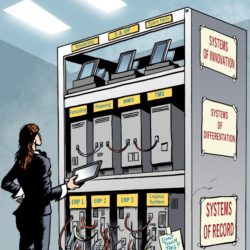E2E Supply Chain Ecosystem Transformation Survey

Companies with mature supply chains are continuing to transform without hesitation. But companies that have failed to invest in their supply chain for years are struggling. They understand that transformation is necessary, but where should they start? And in which direction should they steer their organization? Four participants in the E2E Supply Chain Ecosystem Transformation Survey share their experiences.
Ecosystem
Due to geopolitical conflicts, new trade barriers and climate change, the number of grey and black swans has increased significantly in recent years. Like Bosch, many companies have been forced to embark on a transformation and improve their supply chain resilience. That transformation is not just limited to their own organization, but extends to the entire ecosystem in which they operate. “Many supply chain leaders realize that they need to look beyond the four walls of their own company, towards suppliers, customers and other supply chain partners. How can they get a better view of everything happening in the ecosystem that impacts their own supply chain?,” says Kristof De Coster, Vice President Supply Chain Excellence Northern Europe at consulting firm Efeso.
Such companies regularly approach Efeso, asking how to set up such a transformation. “Ecosystem transformation is the next step towards a more mature supply chain,” De Coster comments. “But we see many companies struggling with this transformation. Apparently, there are all kinds of factors or circumstances that prevent companies from taking the next step. We want to know what they are. That was the reason for us, together with Supply Chain Media, to ask almost a hundred supply chain executives about their experiences with supply chain ecosystem transformations.”
Download the ‘E2E Supply Chain Ecosystem Transformation Survey’
Fill in the form and receive the survey in your inbox.
Find more whitepapers of Supply Chain Movement here >>









